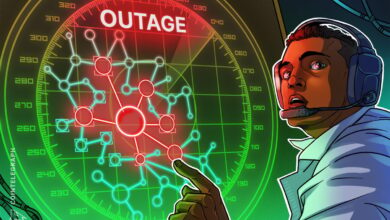Are futures traders jumping ship?

Key takeaways:
-
BTC derivatives metrics show traders taking caution, but the data suggests traders have yet to reach anxiety levels.
-
Bitcoin ETF outflows and tech sector weakness kept sentiment down, reducing confidence that Bitcoin could hold above $89,000.
Bitcoin (BTC) retested the $89,000 level on Wednesday after an unsuccessful attempt to recover $93,500 in the previous day’s trading session. The move surprised traders and led to $144 million in liquidity from leveraged bullish BTC positions. Regardless of the drivers behind the correction, bitcoin derivatives markets have shown resilience, suggesting a bullish setup.
Bitcoin’s Monthly futures The premium held close to 4% above spot markets on Wednesday, slightly below the 5% level generally viewed as neutral. Some analysts argued that the metric briefly turned negative as Bitcoin traded below $89,200 on Tuesday, but aggregate numbers from major exchanges suggest otherwise. A discount in futures contracts usually indicates overconfidence from bears.
Bitcoin traders remain wary of risk, but panic remains absent
To assess whether retail traders were most affected by the decline, it is useful to examine perpetual futures. These contracts tend to mirror spot markets closely but rely on a funding rate to balance leverage. Under normal conditions, buyers (Longs) pay between 6% and 12% annually to maintain positions, while readings below that range are on a bearish backdrop.
The BTC Perpetual Futures Funding Rate stood near 4% on Wednesday, in line with the average of the previous two weeks. Although this level still reflects a bearish stance, there are no signs of panic or overconfidence from the bears. The weakness appears on the downside, as Bitcoin has been trending lower since hitting an all-time high on October 6.
BTC options Delta Skew has remained close to 11% over the past week, signaling that traders have not materially adjusted their risk perception. Caution continues, as put options (sell) continue to trade above the neutral 6% premium relative to Call options (buy). This indicates that whales and market makers remain uneasy about exposure to the downside, even though current levels are far from severe stress.
Traders’ sentiment was pressured by five consecutive sessions of net outflows from Spot Bitcoin Exchange-Traded Funds (ETFs). More than $2.26 billion came out of these products, generating steady selling pressure as market makers generally distributed execution throughout the trading day. While remarkable, the figure represents less than 2% of the overall Bitcoin ETF market.
Some of the world’s biggest tech companies have fallen 19% or more in the past 30 days, including Oracle (orcl US), Ubiquiti (UI US), Oklo (Oklo US) and Roblox (RBLX US). The move toward risk positioning is not limited to cryptocurrencies and also reflects concerns about weakness in the US job market. Segments considered riskier, especially those related to artificial intelligence infrastructure, faced sharp losses.
Related: $90k bitcoin price is an opportunity to ‘close your eyes and bid’: analyst
Additional pressures came from the consumer sector, which felt the impact of the US government shutdown that lasted until November 12. Seller Target (TGT Us) cut its full-year earnings outlook on Wednesday and warned of a softer holiday season as profitability continues. Inflation remains a significant concern, as it constrains the capacity of the US Federal Reserve to lower interest rates.
Regardless of Nvidia’s upcoming results, some analysts have questioned the “nature of some of NVIDIA’s AI investments in its own customers,” according to on Yahoo Finance. What investors have driven out of Bitcoin’s digital-gold narrative is still uncertain, but at this stage, the possibility of BTC’s recovery of $95,000 is closely tied to an improvement in macroeconomic conditions.
This article is for general informational purposes and is not intended to be and should not be construed as legal or investment advice. The views, thoughts, and opinions expressed herein are those of the author alone and do not necessarily reflect or represent the views and opinions of Cointelegraph.


